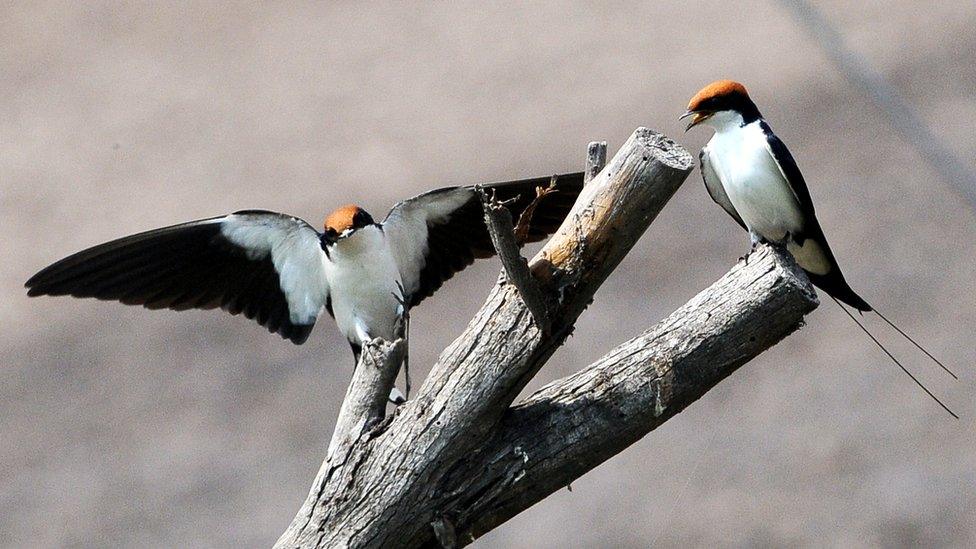Scientists have been studying how far birds fly and have found some surprising results.
- Published
- comments

One swallow flew 6,119 miles!
Scientists researching bird populations have found that some birds travel surprisingly long distances.
The British Trust for Ornithology, who study bird habits and populations, asked volunteers to help them find out more about our feathered friends.
A million birds had numbered rings fitted so that they could be traced and identified as they flew across the world.
The longest flight recorded was from a seabird called a 'Manx shearwater' which was recorded flying 7,564 from Scotland to Argentina
This is a Manx shearwater. they eat herrings, sardines and sprats.
Manx shearwaters aren't the only long distance flyers.
An Arctic skua, flew from Scotland to Brazil, which was 6,845 miles.
And a swallow flew all the way from Britain to South Africa!
An Arctic skua can fly up to 50 miles per hour!
The data gathered by our fantastic volunteers help us to determine whether species are in trouble and, if they are, at what point of the lifecycle the problems are occurring.
Not only did the rings mean that the trust could see how far birds were travelling.
Researchers were able to find out how well different types of birds are breeding and how big their populations are.
They were also able to find out how long these birds lived for.
One fulmar was found to be over 40 years old
A Scottish fulmar bird that was ringed was found to be at least 41 years, 11 months and 17 days old.
The longest-living wild bird in Britain was found in 2008 and it was a 50-year-old Manx shearwater, from Bardsey Island in Wales.
- Published14 April 2020
- Published23 June 2020
- Published14 April 2020
